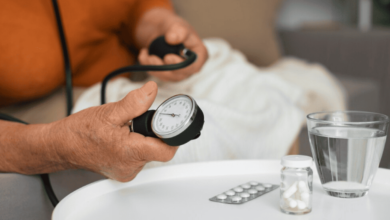
Introduction
Exercise plays a pivotal role in managing diabetes by improving insulin sensitivity, lowering blood sugar levels, and enhancing overall well-being. However, timing your exercise sessions can significantly impact their effectiveness, especially for individuals with diabetes. Understanding the optimal timing of exercise can help diabetics achieve better glucose control and maximize the health benefits of physical activity.
The Physiology of Exercise and Blood Sugar Regulation
Before delving into the timing aspect, it’s crucial to understand how exercise affects blood sugar levels in individuals with diabetes. During physical activity, muscles require energy, which prompts the body to utilize glucose from the bloodstream and glycogen stored in the muscles and liver. This process helps to lower blood sugar levels. Take Metformin Hcl 500 mg to treat type 2 diabetes.
Moreover, exercise enhances insulin sensitivity, allowing cells to uptake glucose more efficiently. As a result, regular physical activity can lead to improved long-term glucose control and reduced risk of complications associated with diabetes.
Factors Influencing Exercise Timing
Several factors can influence the optimal timing of exercise for individuals with diabetes:
a. Circadian Rhythms: The body’s internal clock, known as the circadian rhythm, affects various physiological processes, including metabolism and hormone secretion. Research suggests that exercising at certain times of the day, such as in the morning or afternoon, may yield different metabolic responses. You can also try Metformin Hydrochloride 500 mg to cure type 2 diabetes.
b. Meal Timing: The timing and composition of meals can impact blood sugar levels before, during, and after exercise. Eating carbohydrates before exercising can provide fuel for the workout, while consuming protein and carbohydrates after exercise can aid in muscle recovery and glycogen replenishment.
c. Medication Schedule: Some individuals with diabetes may be taking medications such as insulin or oral hypoglycemic agents that can influence blood sugar levels and exercise performance. Understanding how these medications interact with exercise is essential for proper timing.
d. Personal Preferences and Lifestyle: Each individual may have different preferences regarding the timing of exercise based on their daily schedule, work commitments, and energy levels. Finding a time that fits into one’s lifestyle and is sustainable in the long term is crucial for adherence to an exercise routine.
Morning vs. Afternoon vs. Evening Exercise
The debate over the best time to exercise for diabetics often centers around morning versus afternoon versus evening workouts. Each timing option has its advantages and considerations:
a. Morning Exercise: Morning workouts can jumpstart metabolism and provide a sense of accomplishment early in the day. For individuals with diabetes, exercising in the morning may help lower blood sugar levels and improve insulin sensitivity throughout the day. Moreover, morning exercise can boost energy levels and enhance mental focus, which may benefit overall productivity.
However, morning exercise may pose challenges for some individuals, especially those who experience dawn phenomenon—a surge in blood sugar levels in the early morning hours. In such cases, individuals may need to monitor their blood sugar levels closely and adjust their medication or carbohydrate intake accordingly.
b. Afternoon Exercise: Exercising in the afternoon can be ideal for individuals who may feel sluggish in the morning or have time constraints due to work or family commitments. Afternoon workouts offer an opportunity to break up sedentary periods during the day and can provide a boost of energy to carry through the evening.
From a physiological standpoint, exercising in the afternoon may leverage the body’s natural circadian rhythm, as core body temperature tends to be higher in the late afternoon, potentially enhancing exercise performance and calorie burning. However, individuals should be mindful of their blood sugar levels before exercising, especially if they’ve had a large meal earlier in the day.
c. Evening Exercise: Evening workouts can be a convenient option for individuals with busy schedules or those who prefer to unwind after a long day. Exercising in the evening may help relieve stress and promote relaxation, leading to better sleep quality—a crucial factor in diabetes management.
However, exercising too close to bedtime may elevate adrenaline and cortisol levels, which can interfere with sleep patterns. Additionally, some individuals may experience post-exercise hypoglycemia during the night, particularly if they take insulin or other medications that lower blood sugar levels.
Tailoring Exercise Timing to Individual Needs
Ultimately, there is no one-size-fits-all approach to determining the best time to exercise for individuals with diabetes. It’s essential to consider individual preferences, lifestyle factors, and physiological responses when scheduling workouts. Here are some tips for tailoring exercise timing to individual needs:
a. Monitor Blood Sugar Levels: Regularly monitoring blood sugar levels before, during, and after exercise can provide valuable insights into how different timing strategies affect glucose control. Keeping a log of blood sugar readings and exercise sessions can help identify patterns and make adjustments accordingly.
b. Experiment with Timing: If possible, experiment with different exercise timings to determine what works best for your body. Pay attention to how your energy levels, blood sugar levels, and overall well-being fluctuate throughout the day in response to exercise.
c. Consult with Healthcare Providers: Before making any significant changes to your exercise routine, consult with your healthcare provider, especially if you have underlying health conditions or are taking medications that may impact exercise timing. Your healthcare team can offer personalized guidance based on your medical history and individual needs.
d. Prioritize Consistency: Regardless of the timing, consistency is key to reaping the benefits of exercise for diabetes management. Choose a time that fits into your schedule and lifestyle, and make exercise a regular part of your daily routine.
Conclusion
The optimal timing of exercise for individuals with diabetes is influenced by various factors, including circadian rhythms, meal timing, medication schedule, and personal preferences. Morning, afternoon, and evening workouts each offer unique advantages and considerations, and the best timing may vary from person to person. By monitoring blood sugar levels, experimenting with different timing strategies, and consulting with healthcare providers, individuals with diabetes can tailor their exercise routine to maximize glucose control and overall health benefits. Regardless of the timing, consistency and adherence to an exercise routine are crucial for long-term diabetes management and improved quality of life.


